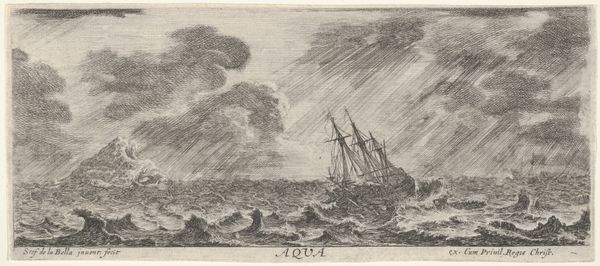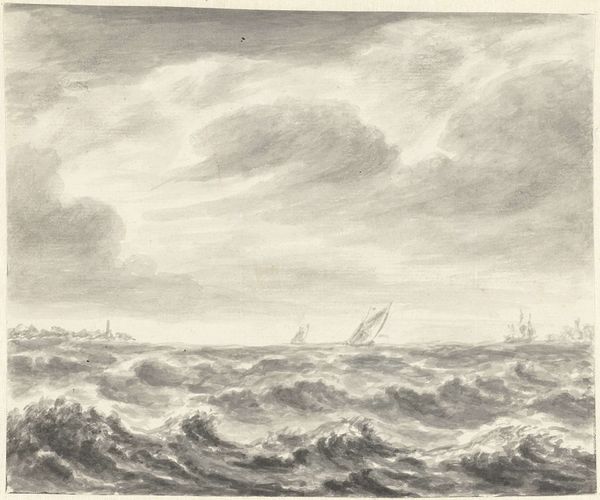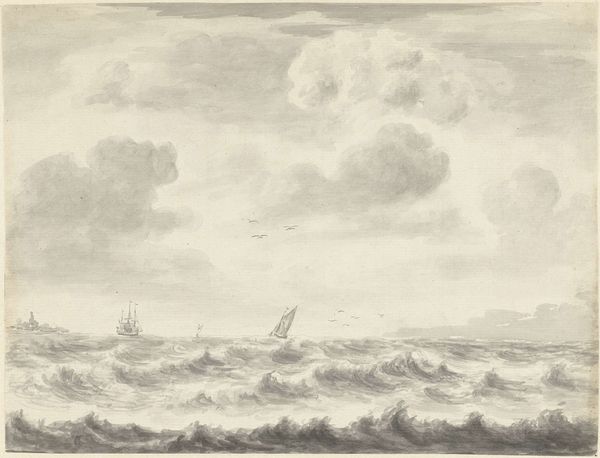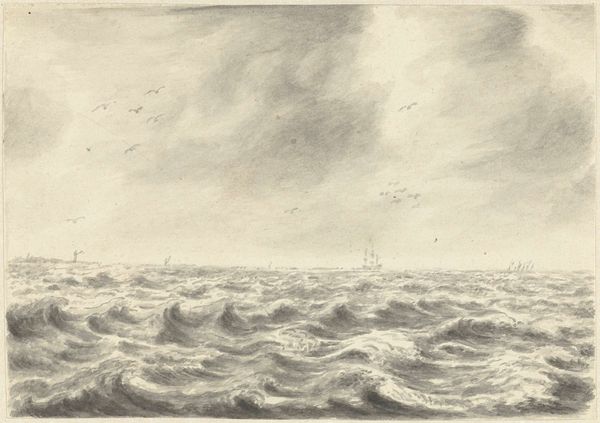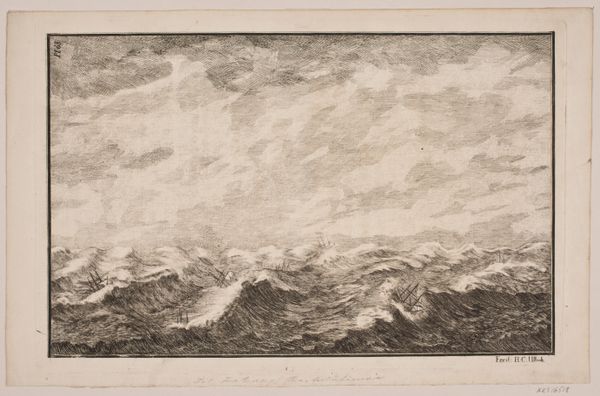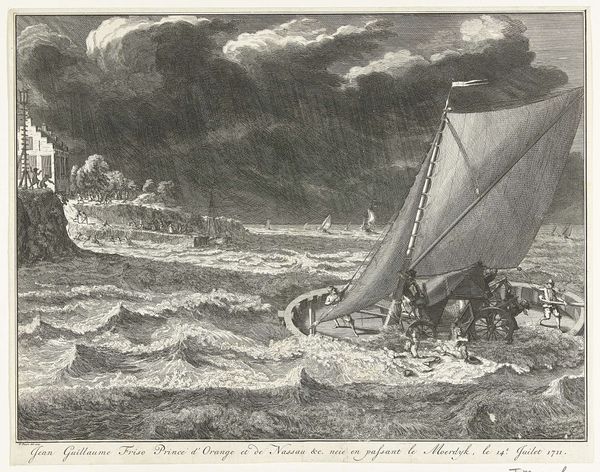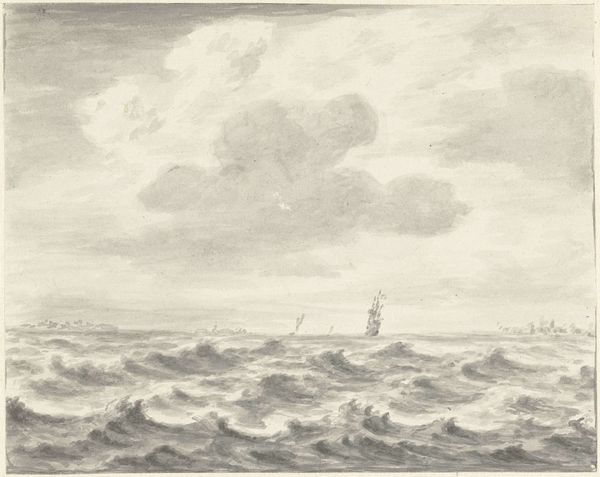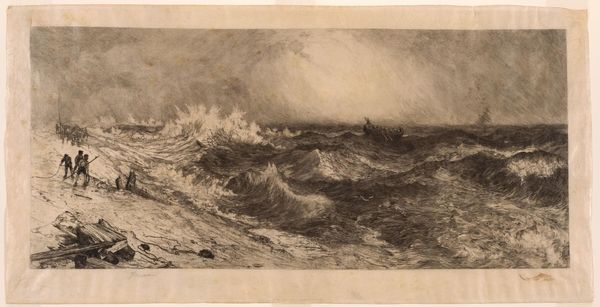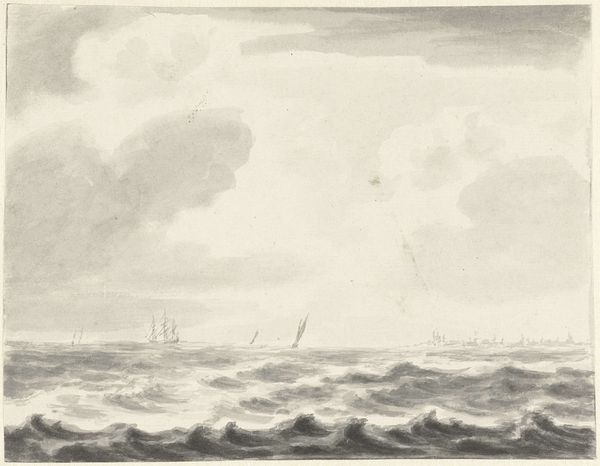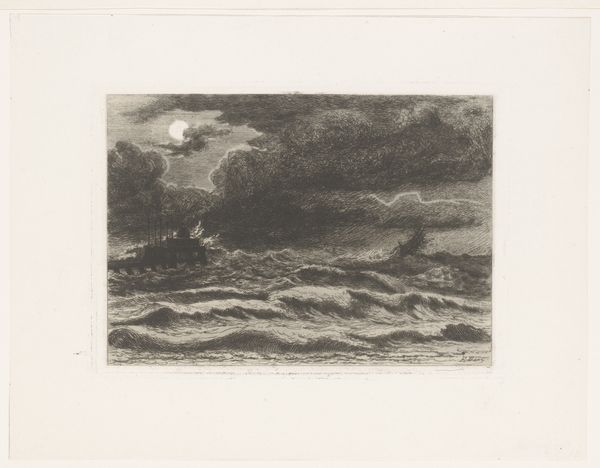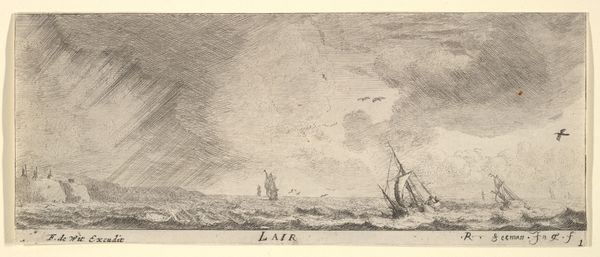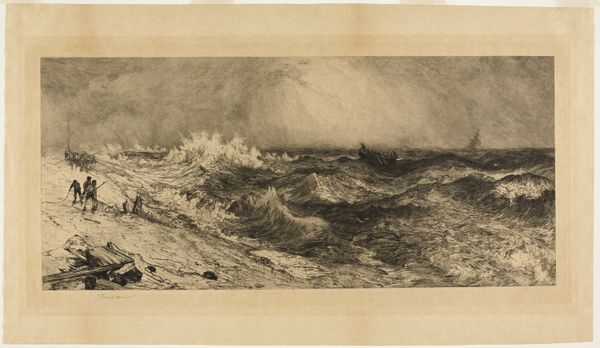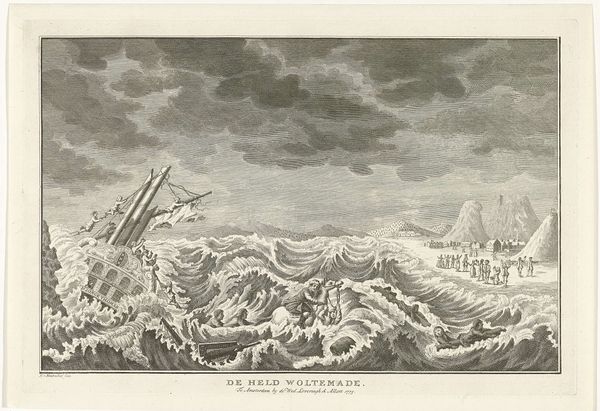
drawing, print, etching
drawing
etching
landscape
realism
Dimensions: sheet: 3 1/16 x 8 in. (7.8 x 20.3 cm)
Copyright: Public Domain
Curator: We're looking at "L'Eau," or "Water," part of the series "The Elements" by Reinier Nooms, created sometime between 1635 and 1670. This etching captures a tempestuous seascape. Editor: My immediate reaction is one of awe and a little bit of anxiety. The stark monochromatic rendering really emphasizes the dynamism of the scene—you can almost feel the ocean's raw power. Curator: Absolutely. Consider that Nooms, also known as Zeeman, was a sailor himself. This lived experience gives the piece a visceral authenticity. What do you see regarding class and the relationship between humans and nature? Editor: There’s a clear tension there. On the left, figures on what looks like a coastline are being battered by wind and the waves; to the right is a vessel seemingly capsizing, all engulfed by a chaotic scene that seems to imply our helplessness against natural elements. Do you think the lack of detail works in its favor? Curator: I do, because it pushes the symbolic potential of water from purely environmental to emotional and psychological; Nooms places water as a dominating force, disrupting commercial activity, destabilizing human endeavors. His use of etching captures that, conveying light as almost struggling to cut through, mirroring societal power structures challenged by unpredictable forces like the sea, and in turn perhaps political upheaval, inequality, and class disparity. Editor: Yes! And it's fascinating how the artist uses only subtle changes in line density to depict the varying textures of the sea, the clouds, and the ships. In some sections, it creates incredible depth; other parts are flattened, highlighting pattern and design. Curator: It truly is a testament to Nooms' ability to extract social resonance from the formal elements, transforming a scene into a narrative of both human struggle and resistance. Editor: I'm leaving with a stronger sense of water as an actor, both a site of potential destruction but also one of journey, of refuge. Curator: Yes, it reveals Nooms' contribution to discussions of social and political order, reminding us that the elements demand both respect and accountability.
Comments
No comments
Be the first to comment and join the conversation on the ultimate creative platform.
